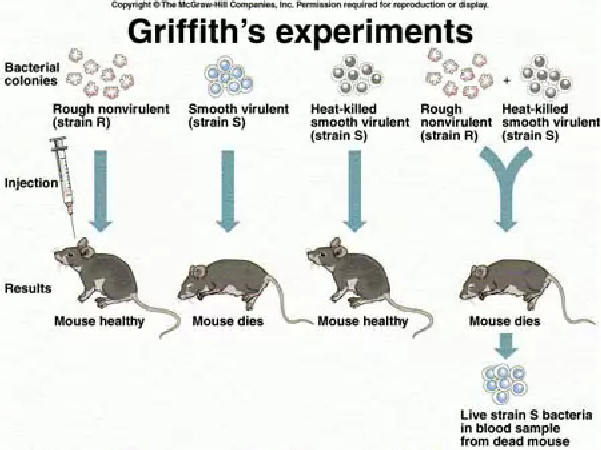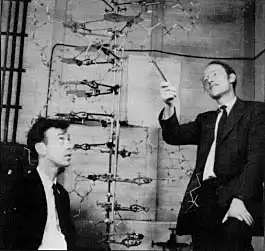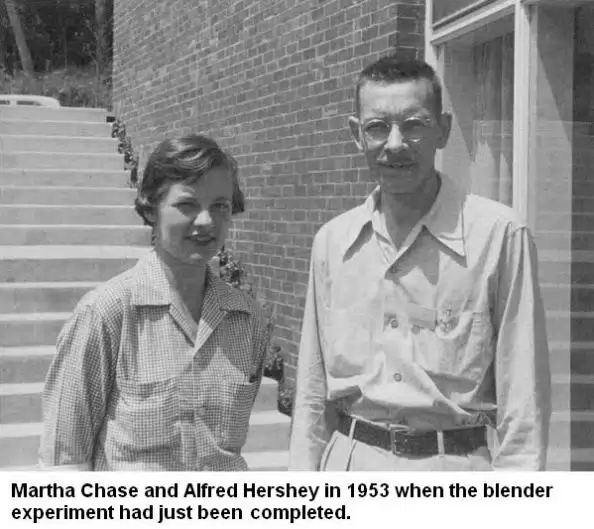
- •KAzan federal univeRsIty Essential English for Biology Students kazan
- •The Content
- •Init IV. Inheritance 60
- •Unit I. What is biology?
- •Text 1.1 The Characteristics Of Life
- •I. Quick check
- •II. Fill in the missing words:
- •III. Use monolingual English dictionary and write down what could
- •IV. Find English equivalents to the following word combinations:
- •V. Give Russian equivalents to the following English terms:
- •VI. Find synonyms among the pool of words:
- •VII. Answer the following questions. Use all information given before:
- •VIII. Match the sentence halves. Make complete sentences:
- •IX. Read and translate the short text without any dictionary:
- •X. Food for thought:
- •XI. Translate into English using all the active possible:
- •Text 1.2. What Do Biologists Do?
- •I. Quick check
- •II. Find synonyms among the pool of words:
- •III. Fill in the missing words:
- •IV. Use monolingual English dictionary and write down what could the words given below mean:
- •V. Match the words with their definitions:
- •VI. Find English equivalents to the following word combinations from the text:
- •VII. Find Russian equivalents for the following word combinations
- •VIII. Read and translate the short text without any dictionary.
- •IX. Food for thought.
- •X. Traslate into English using all the active possible
- •XI. Prepare a short presentation to answer the question:
- •XII. Write a letter to your tutor telling him or her which areas of Biology you would like to specialize in and why. Use these notes to help you.
- •XIII. Prepare a short presentation to answer the question:
- •Unit II. Сell
- •Text 2.1 Cell Theory
- •A typical animal cell
- •A typical plant cell
- •I. Quick check
- •II. Fill in the missing words:
- •III. Use monolingual English dictionary and write down what could the words given below mean:
- •IV. Match these words with their definitions:
- •V. Find English equivalents to the following word combinations:
- •VI. Give Russian equivalents to the following English terms:
- •VII. Find synonyms among the pool of words:
- •VIII. Answer the following questions. Use all information given before:
- •IX. Match the sentence halves. Make complete sentences:
- •X. Read and translate the short text without any dictionary:
- •Text 2.2. Introduction To Cell Division
- •Chromosomes form homologous pairs
- •I. Quick check:
- •II. Fill in the missing words:
- •III. Use monolingual English dictionary and write down what could the words given below mean:
- •IV. Match these words with their definitions:
- •V. Find English equivalents to the following word combinations:
- •VI. Give Russian equivalents to the following English terms:
- •VII. Find synonyms among the pool of words:
- •VIII. Answer the following questions. Use all information given before.
- •IX. Match the sentence halves. Make complete sentences:
- •X. Read and translate the short text without any dictionary:
- •Text 2.3. Microscopes
- •Magnification and resolution
- •The transmission electron microscope
- •The scanning electron microscope
- •I. Quick check
- •II. Fill in the missing words:
- •III. Use monolingual English dictionary and write down what could the words given below mean:
- •IV. Match these words with their definitions:
- •V. Find English equivalents to the following word combinations:
- •VI. Give Russian equivalents to the following English terms:
- •VII. Find synonyms among the pool of words:
- •VIII. Answer the following questions. Use all information given before:
- •IX. Match the sentence halves. Make complete centences:
- •X. Read and translate the short text without any dictionary:
- •XI. Food for thought:
- •Unit III. Molecular biology of the gene
- •Text 3.1. Dna Structure
- •In summary
- •I. Quick check
- •II. Fill in the missing words:
- •III. Use a monolingual English dictionary and give the definitions of the words below:
- •IV. Find English equivalents to the following word combinations:
- •V. Suggest Russian equivalents for the following word combinations
- •VI. Fill in the gaps with the words and expressions from the text:
- •VII. Answer the following questions. Use all information given before.
- •VIII. Read and translate the short text without any dictionary:
- •IX. Food for thought:
- •X.Translate into English using all the active possible:
- •Text 3.2 Chromosomes
- •IV. Find English equivalents for the following word combinations:
- •V. Answer the following questions. Use all information given before:
- •VI. Read and translate the short text without a dictionary:
- •VII. Food for thought:
- •VIII. Translate into English using all the active possible:
- •IX. Use a monolingual English dictionary and write down what could the words given below mean:
- •X. Read the text and render it in English:
- •XI. Prepare a short presentation reflecting the following issues:
- •Init IV. Inheritance
- •Text 4.1. Variation
- •I.Quick check
- •II. Using a monolingual English dictionary define the following genetic terms:
- •III. Find Russian equivalents to the following word combinations:
- •IV. Fill in the gaps with the words and expressions from the text:
- •V. Find English equivalents to the following word combinations:
- •VI. Answer the following questions. Use all information given before.
- •VII. Read and translate the short text without any dictionary:
- •VIII. Food for thought:
- •IX.Translate into English using all the active possible:
- •X. Meet essential targets reflecting the following issues:
- •Text 4.2. Down's Syndrome And Genetic Screening
- •Down's syndrome: trisomy 21
- •V. Fill in the gaps with the words and expressions from the text:
- •VI. Find English equivalents for the following word combinations:
- •VII. Answer the following questions. Use all information given before.
- •VIII. Read and translate the short text without any dictionary:
- •X. Translate into English using all the active possible:
- •XI. Meet essential targets reflecting the following issues:
- •Unit V. Nervous and hormonal coordination
- •Text 5.1. Nerves And Hormones
- •I. Quick check
- •II. Using monolingual English dictionary write down what the words below mean:
- •III. Match the words with their definitions:
- •IV. Match words in a with words in b to form word combinations. Make up sentences with them.
- •V. Translate into English using all the active possible:
- •VI. Fill in the gaps with the words and expressions from the text:
- •VII. Answer the following questions. Use all information given before.
- •VIII. Find English equivalents to the following word combinations and make up sentences with them:
- •IX. Read and translate the short text without any dictionary
- •X. Food for thought.
- •XI. Prepare a short presentation on 2 or 3 glands reflecting the following issues:
- •Text 5.2. Setting up a nerve impulse
- •Investigating nerve impulses
- •Ion channels and action potentials
- •I. Quick check
- •II. Using monolingual English dictionary write down what the words below mean:
- •III. Match the words in the left column with the definitions in the right:
- •IV. Match words in a with words in b to form word combinations. Make up sentences with them.
- •V. Answer the following questions. Use all information given before:
- •VI. Translate into English using all the active possible:
- •VII. Find English equivalents to the following word combinations and make up sentences with them:
- •VIII. Read and translate the short text without any dictionary
- •I. Quick check:
- •II. Fill in the missing words:
- •III. Use monolingual English dictionary and write down what could the words given below mean:
- •IV. Match these words with their definitions:
- •V. Find English equivalents to the following word combinations:
- •VI. Give Russian equivalents to the following English terms:
- •VII. Find synonyms among the pool of words:
- •VIII. Answer the following questions. Use all information given before:
- •IX. Match the sentence halves. Make complete sentences:
- •X. Read and translate the short text without any dictionary:
- •XI. Food for thought:
- •Text 6.2. Natural Selection
- •I. Quick check
- •II. Fill in the missing words:
- •III. Use monolingual English dictionary and write down what could the words given below mean:
- •IV. Match these words with their definitions:
- •V. Find English equivalents to the following word combinations:
- •VI. Give Russian equivalents to the following English terms:
- •VII. Find synonyms among the pool of words:
- •VIII. Answer the following questions. Use all information given before:
- •IX. Match the sentence halves. Make complete sentences:
- •X. Read and translate the short text without any dictionary:
- •XI. Food for thought:
- •Text 6.3. Artificial Selection
- •I. Quick check:
- •II. Fill in the missing words:
- •III. Use monolingual English dictionary and write down what could the words given below mean:
- •IV. Match these words with their definitions:
- •V. Find English equivalents to the following word combinations:
- •VI. Give Russian equivalents to the following English terms:
- •VII. Find synonyms among the pool of words:
- •VIII. Answer the following questions. Use all information given before:
- •IX. Match the sentence halves. Make complete sentences:
- •X. Read and translate the short text without any dictionary:
- •XI. Food for thought:
- •Text 6.4. Human Evolution: Primate Ancestors
- •I. Quick check:
- •II. Fill in the missing words:
- •III. Use monolingual English dictionary and write down what could the words given below mean:
- •IV. Match these words with their definitions:
- •V. Find English equivalents to the following word combinations:
- •VI. Give Russian equivalents to the following English terms:
- •VII. Find synonyms among the pool of words:
- •VIII. Answer the following questions. Use all information given before:
- •IX. Match the sentence halves. Make complete sentences:
- •X. Read and translate the short text without any dictionary:
- •XI. Food for thought:
- •Unit VII. Photosynthesis
- •Text 7.1. Photosynthesis: An Overview
- •I. Quick check:
- •II. Fill in the missing words:
- •III. Use monolingual English dictionary and write down what could the words given below mean:
- •IV. Match these words with their definitions:
- •V. Find English equivalents to the following word combinations:
- •VI. Give Russian equivalents to the following English terms:
- •VII. Find synonyms among the pool of words:
- •VIII. Answer the following questions. Use all information given before:
- •IX. Match the sentence halves. Make complete sentences:
- •X. Read and translate the short text without any dictionary:
- •XI. Food for thought:
- •Text 7.2 Factors Affecting The Rate Of Photosynthesis
- •I. Quick check:
- •II. Fill in the missing words:
- •III. Use monolingual English dictionary and write down what could the words given below mean:
- •IV. Match these words with their definitions:
- •V. Find English equivalents to the following word combinations:
- •VI. Give Russian equivalents to the following English terms:
- •VII. Find synonyms among the pool of words:
- •VIII. Answer the following questions. Use all information given before:
- •IX. Match the sentence halves. Make complete sentences:
- •X. Read and translate the short text without any dictionary:
- •XI. Food for thought:
- •Text 7.3. Photosynthesis In Different Climates
- •I. Quick check
- •II. Fill in the missing words:
- •III. Use monolingual English dictionary and write down what could the words given below mean:
- •IV. Match these words with their definitions:
- •V. Find English equivalents to the following word combinations:
- •VI. Give Russian equivalents to the following English terms:
- •VII. Find synonyms among the pool of words:
- •VIII. Answer the following questions. Use all information given before:
- •IX.Match the sentence halves. Make complete sentences:
- •X. Read and translate the short text without any dictionary:
- •XI. Food for thought:
- •Unit VIII. Structure and transport in plants
- •Text 8.1 The Leaf
- •I. Quick check
- •VI. Match these words with definitions:
- •VII. Give Russian equivalents to the following English terms:
- •VIII. Match the sentence halves. Make complete sentences.
- •IX. Answer the following questions. Use all information given before.
- •X. Read and translate the short text without any dictionary.
- •XI. Food for thought
- •XII. Translate into English using all the active possible.
- •Text 8.2. The Stem
- •I. Quick check
- •III. Use monolingual English dictionary and write down what could the words given below mean:
- •IV. Find English equivalents to the following word combinations:
- •V. Give Russian equivalents to the following English terms:
- •VI. Find synonyms among the pool of words:
- •VII. Answer the following questions. Use all information given before:
- •VIII. Match the sentence halves. Make complete sentences:
- •IX. Read and translate the short text without any dictionary:
- •X. Food for thought:
- •XI. Translate into English using all the active possible.
- •Supplementary reading Texts for Reading, Retelling and Discussing
- •Extract from a lecture about immunization
- •Interpreting the results of a dihybrid cross
- •Quick check:
- •Griffith's experiment: transformation of pneumococci.
- •Quick check:
- •Quick check:
- •Quick check:
- •Suggested Answers and Solutions
- •Glossary of Biological Terms
- •Appendices
- •Words That Are Commonly Misused
- •Book Presentation (Useful Language)
- •Phrases to Be Used in Discussion
- •References – Список использованной литературы
- •Web – Resources and Support Web links to some useful and helpful resources:
Griffith's experiment: transformation of pneumococci.
P

Griffith found that mice injected with live strain S soon died, but those injected with live strain R survived. Mice injected with dead strain S bacteria (killed by heat) аll survived. The results of this series of experiments were as expected. However, the results of Griffith's next series of experiments were thoroughly baffling: mice injected with a mixture of heat-killed strain S and live strain R died. Moreover, Griffith recovered live strain-S bacteria from the dead mice.
After many careful experiments, Griffith concluded that hereditary material had passed from the dead bacteria to the live bacteria. This changed harmless strain R bacteria into virulent strain S pathogens. This process is called transformation.
Avery's experiment: DNA was the transforming agent.
I n
the 1940s, Oswald T. Avery, Colin MacLeod, and Maclyn McCarty showed
that DNA was responsible for transformation.
n
the 1940s, Oswald T. Avery, Colin MacLeod, and Maclyn McCarty showed
that DNA was responsible for transformation.
They used enzymes that hydrolysed polysaccharide, DNA, RNA, and protein on samples of the disease-causing strain-S pneumococci.
Different samples had different parts of their cells destroyed by these enzymes.
The researchers then exposed strain-R pneumococci to the treated samples of strain S.
The transformation of strain R to strain S was blocked only when the DNA in the sample was destroyed.
These results provided strong evidence that DNA carried genetic information for transformation. However, many scientists remained unconvinced.
Hershey and Chase: the role of DNA on the T2 phage life cycle
I n
1952, Alfred D. Hershey and Martha Chase performed several
experiments with T2 bacteriophage, a virus that infects bacteria.
Their results convinced even the sceptics that DNA, and not protein,
was the genetic material.
n
1952, Alfred D. Hershey and Martha Chase performed several
experiments with T2 bacteriophage, a virus that infects bacteria.
Their results convinced even the sceptics that DNA, and not protein,
was the genetic material.
Electron micrographs indicate that T2 bacteriophage infects Escherichia coli by injecting its DNA into the bacterium while leaving its protein coat on the outside. The phage takes over the genetic machinery of the host cell to make new phages. Eventually, the bacterial cell bursts (a process called lysis), releasing new phages to infect other bacteria (figure 1).
Hershey and Chase wanted to test the hypothesis that only the viral DNA entered the bacterium. They made use of the fact that DNA contains phosphorus but not sulphur, whereas protein contains sulphur but not phosphorus.
With some T2 phages, they labelled the viral DNA with a radioactive isotope of phosphorus (32P). With other T2 phages, they labelled the viral protein coat with a radioactive isotope of sulphur (35S).
They added the viruses to a culture of E. coli and gave them enough time to infect their host cells (but not enough time to reproduce).
The viral coats were then separated from the infected bacteria by shaking the mixture vigorously in a blender.
When E. coli was infected with a T2 phage containing 35S (labelled Protein), little radioactivity occurred within the bacterial cells.
With a T2 phage containing 32P (labelled DNA), the bacterial cells were radioactive. Moreover, when the bacterial cells burst open, the new viruses that emerged were radioactively labelled with 32P. When the protein was labelled, new viruses were only slightly radioactive.
